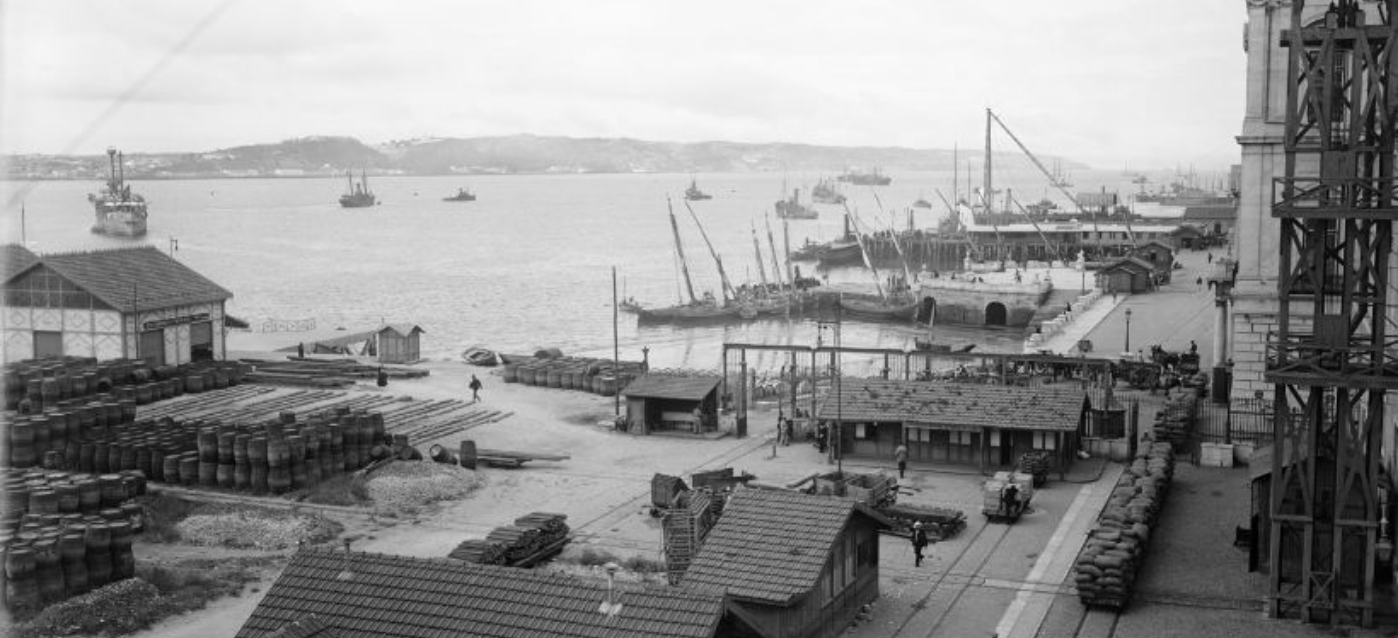Este website utiliza cookies. Ao continuar a navegação está a aceitar a sua utilização.
Caso pretenda saber mais, consulte a nossa política de privacidade.

From the Tagus to the world
The navigability and safety conditions offered by the Tagus estuary have always benefited the human presence in the area. The oldest traces of this presence date back to prehistory. Historians believe that the Phoenicians, in the 12th century BC, recognized the merits of Lisbon's location and established a commercial port on the North Bank of the Tagus River. The strategic importance of Lisbon did not escape to other nations of sailors and explorers, which in 205 BC, motivated the conquest of the city by the Romans and their baptism as Olisipo who received the epithet "Felicitas Iulia".
With the fall of the Roman Empire, the Suevi and Visigoths controlled the city since AD 472. The Moors conquered Lisbon - Asch-Bonnah - in AD 714 and developed the port through their Mediterranean and Atlantic commercial activities. In the 11th century the process of internal reorganization in Europe starts a new course and, with the development of the crusades, traffic and maritime trade have suffered considerable increases.
Having noticed the strategic importance of the city of Lisbon in the international context, D. Afonso Henriques directed his expansion movements towards the south, with the aim to establish a zone of Portuguese influence along the coast, managing to guarantee the support of the Crusades for the conquest of the city of Lisbon, fundamental for the domain of the Tagus estuary, a large natural port that would greatly improve the importance of the territory in this European context.
On June 28, 1147, a fleet of 164 ships carrying an army of 13,000 crusaders entered the Tagus. Having played a key role in conquering the city of Lisbon from the Moors and later in defending its nationality, the port is closely linked to the city that was born and prospered with it.
At the beginning of the 13th century the navigation methods have evolved considerably, with the use of the compass as a navigation aid and the introduction of the registration rudder, bringing more stability and manoeuvrability to vessels. Larger ships with greater cargo capacity were built.
When the first regular lines from the Mediterranean to England and Northern Europe, appeared, in the first quarter of the 13th century, across the Strait of Gibraltar, Lisbon became a mandatory stopover for all ships transiting the Portuguese coast. Taking advantage of an enviable geographical situation, the port of Lisbon easily entered the international maritime routes. After having played a fundamental role in the nationality defence, at the beginning of the 2nd Dynasty, - when 13 Galleys and 40 Castilian ships tried unsuccessfully, to close the port during the siege of 1384 - Lisbon, with its port, stated itself by more than once as a political and military guarantor of national independence, after having contributed decisively to the country's own formation.

Once peace was established, the reign of King João I saw the beginning of the journey towards the opening of new worlds and new markets, starting in Lisbon, which was already considered a great cosmopolitan metropolis, visited by vessels of various origins. The sailors who took to the sea from Lisbon played a fundamental role at the time of the Portuguese discoveries, increasing the borders of the known world and transforming Lisbon into a key port for global trade. Portuguese navigators challenged the deeply rooted belief in Europe at the time - that the land was flat - managing to counter it by making the trips that united the continents for the first time. In 1487 Bartolomeu Dias passed the Cape of Good Hope.
In 1497 Vasco da Gama took to the sea from Lisbon and returned two years later, after having discovered the sea route to India. These and other later trips helped to make Lisbon a rich city and put Portugal in evidence in the world. It was during this time that security and surveillance of the entrance to the Tagus estuary was strengthened with the construction of forts: on the left bank of the Tagus, fortifications were built from Cabeça Seca (Bugio), to Almada.
In the 16th and 17th centuries, the Portuguese-Spanish trade had a great development - Spanish domain from 1580 to 1640 - works were carried out to de-silt the Tagus River. The port of Lisbon has a fundamental importance as a port of call, with shipping heading for the Mediterranean and Atlantic Ocean, and the landing in Lisbon of products from Brazil - wood, sugar, and gold from Minas Gerais.
As a result of the 1755 earthquake, several buildings were destroyed, such as the Palácio da Ribeira, where D. João II lived, and on the lower floor, the Casa da Índia. With the reconstruction of Lisbon, Praça do Comércio succeeded Terreiro do Paço, and the rebuilding of the city was planned according to the development of commerce.
In the 19t century, the developments brought about by the Industrial Revolution imposed new needs, among them the modernization of the port of Lisbon; studies and projects followed, culminating in the inauguration, on October 31, 1887, by D. Luís I, of the major works in the port of Lisbon.
